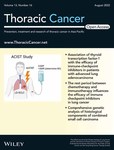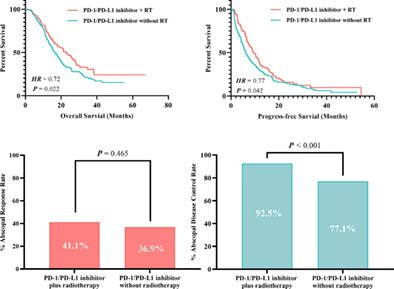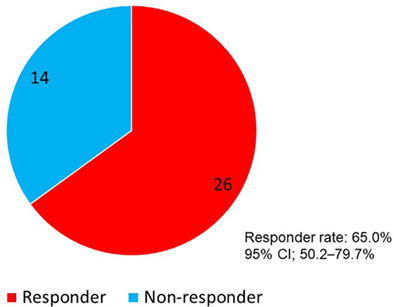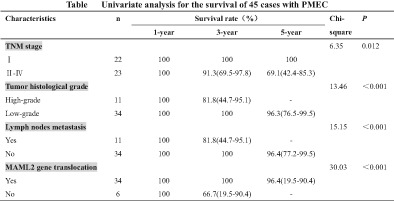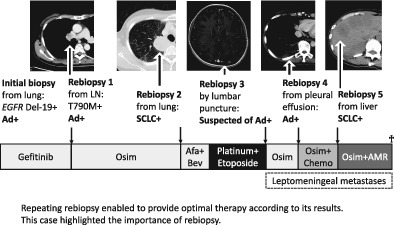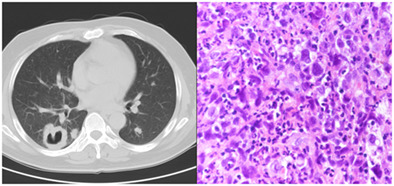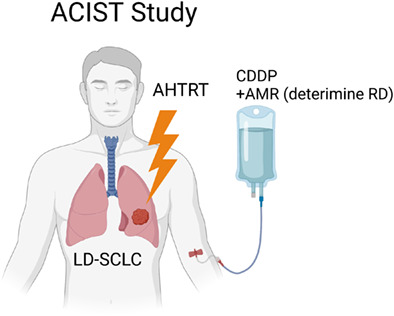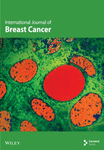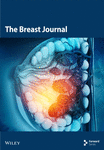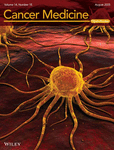Journal list menu
Export Citations
Download PDFs
ISSUE INFORMATION
ORIGINAL ARTICLES
Real-world utilization of PD-1/PD-L1 inhibitors with palliative radiotherapy in patients with metastatic non-small cell lung cancer
- Pages: 2291-2300
- First Published: 28 June 2022
A retrospective study of the efficacy and safety of naldemedine for opioid-induced constipation in thoracic cancer patients
- Pages: 2301-2308
- First Published: 05 July 2022
Association of thyroid transcription factor-1 with the efficacy of immune-checkpoint inhibitors in patients with advanced lung adenocarcinoma
- Pages: 2309-2317
- First Published: 08 July 2022
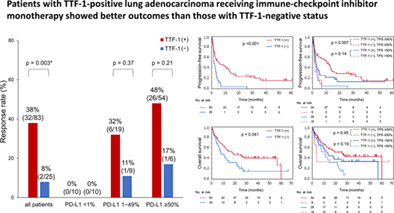
This multicenter retrospective study investigated the association between immune-checkpoint inhibitor monotherapy effectiveness and the expression status of thyroid transcription factor 1 (TTF-1) in 108 patients with advanced lung adenocarcinoma and showed that programmed death-ligand 1 tumor proportion score, objective response rate, progression-free survival, and overall survival were significantly lower in patients with TTF-1-negative expression than those in TTF-1-positive patients.
A comprehensive study of alternative splicing in malignant pleural mesothelioma identifies potential therapeutic targets in a new cluster with poor survival
- Pages: 2318-2330
- First Published: 05 July 2022
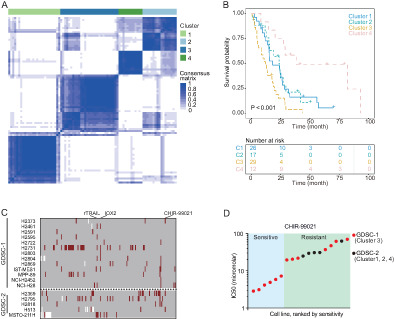
Based on alternative splicing profile, 84 TCGA MPM patients are clustered into four clusters, and patients within cluster 3 have the shortest survival time. Drug susceptibility test results of 155 small-molecule drugs from the GDSC data set reveal that patients within cluster 3 (GDSC-1) are sensitive to CHIR-99021, a small-molecule inhibitor of GSK-3.
Pulmonary completion lobectomy after segmentectomy: An integrated analysis of perioperative outcomes
- Pages: 2331-2339
- First Published: 05 July 2022

CL after segmentectomy can be accomplished securely using either VATS or thoracotomy without major complications in selected patients. Particularly, patients with completion upper lobectomy are more likely to have severe hilar adhesions. Although patients exhibiting more severe hilar adhesions tended to undergo thoracotomy and appeared in the long interval-to-CL group, the perioperative outcomes were equivalent to those shown in the VATS and short interval-to-CL groups, respectively.
Multi-organs perioperative immune-related adverse events and postoperative bronchial anastomotic fistula in a patient receiving neoadjuvant immunotherapy with NSCLC
- Pages: 2340-2345
- First Published: 11 July 2022
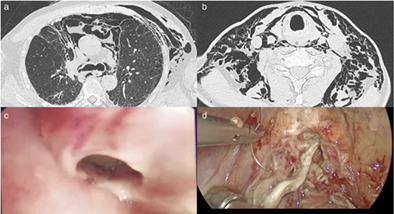
We describe a case of a 63-year-old man with IIIC stage NSCLC who received neoadjuvant chemoimmunotherapy and radical lobectomy. He successively suffered immunologic enterocolitis and Interstitial lung disease. Bronchial fistula was found on POD 10 and an emergent repair surgery was performed. This is the first case of multi-organs, multi-time point immune-related adverse events (irAE) in perioperative NSCLC patients who received neoadjuvant chemoimmunotherapy.
The rest period between chemotherapy and immunotherapy influences the efficacy of immune checkpoint inhibitors in lung cancer
- Pages: 2346-2354
- First Published: 11 July 2022
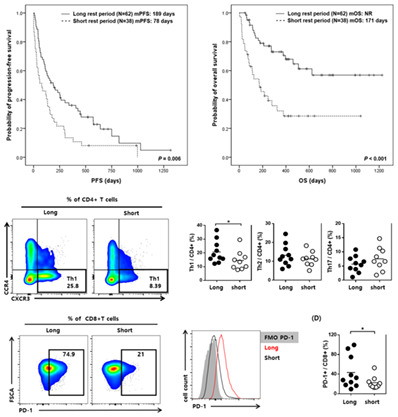
This is the first study to demonstrate that the rest period between chemotherapy and immunotherapy affects the efficacy of immune checkpoint inhibitors. Time interval from chemotherapy to immunotherapy may affect immune cell status, efficacy, progression-free survival, and overall survival in lung cancer patients treated with immune checkpoint inhibitors.
Pleural homocysteine for malignant pleural effusion: A prospective and double-blind diagnostic test accuracy study
- Pages: 2355-2361
- First Published: 11 July 2022

Two previous studies reported that pleural fluid homocysteine is a promising diagnostic marker for malignant pleural effusion. However, the diagnostic accuracy of pleural fluid homocysteine was low in our two cohorts. Possible explanations for the inconsistency, as well as its clinical implications, were discussed.
Comprehensive genetic analysis of histological components of combined small cell carcinoma
- Pages: 2362-2370
- First Published: 11 July 2022
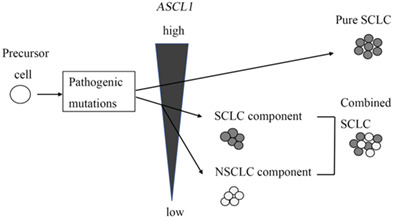
We investigated the relationship between genetic alterations and each histological component heterogeneously detected in combined SCLC (cSCLC) and metachronously transformed SCLC. The different histological components of cSCLC shared the same major somatic mutations, but ASCL1 expression was lower in the NSCLC component than in the SCLC component. Each histological component of cSCLC undergoes morphological evolution depending on the difference in ASCL1 expression, not due to the differences in acquired somatic mutations.
99mTc bone scintigraphy does not affect preoperative workup for patients with potentially resectable esophageal squamous cell carcinoma
- Pages: 2371-2376
- First Published: 10 July 2022
High expression of fibroblast-activating protein is a prognostic marker in non-small cell lung carcinoma
- Pages: 2377-2384
- First Published: 11 July 2022
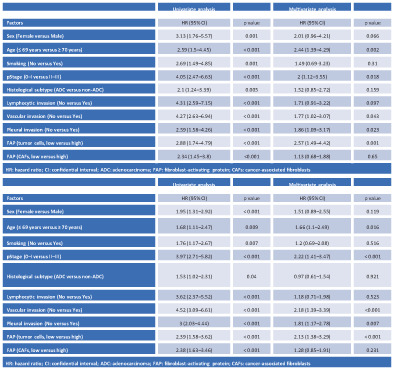
A total of 280 patients (81.4%) had low FAP expression, and 64 patients (18.6%) had high FAP expression in tumor cells. In CAFs, 230 patients (66.9%) had low FAP expression, and 114 patients (33.1%) had high FAP expression. In multivariate analyses, high FAP expression in tumor cells was an independent predictive factor of both overall survival (OS; HR = 2.57, 95% CI: 1.49–4.42, p < 0.001) and recurrence-free survival (RFS; HR = 2.13, 95% CI: 1.38–3.29, p < 0.001).
BRIEF REPORT
Pulmonary mucoepidermoid carcinoma: A clinicopathological study of 45 patients
- Pages: 2385-2389
- First Published: 23 June 2022
CASE REPORTS
Radiation-induced pseudomembranous tracheobronchitis: A report of two cases
- Pages: 2390-2393
- First Published: 06 July 2022
Heterogeneity or transformation? A whack-a-mole case of EGFR-mutant lung adenocarcinoma and small cell carcinoma: A case report
- Pages: 2394-2397
- First Published: 06 July 2022
A rare presentation of anaplastic large cell lymphoma as a cavitary pulmonary mass with hypercalcemia
- Pages: 2398-2400
- First Published: 10 July 2022
Uniportal thoracoscopic left posterior basal segmentectomy using a posterior approach
- Pages: 2401-2403
- First Published: 11 July 2022
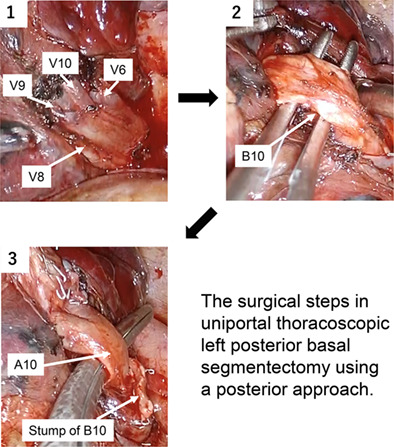
Posterior basal (S10) segmentectomy is one of the most challenging (and uncommon) types of pulmonary segmentectomy. We here present two key tips, which are a full understanding of the relative locations of the pulmonary vessels and bronchi by preoperative three-dimensional computed tomography/broncho-angiography and the use of “suction-guided stapling”, facilitating a uniportal operation.
STUDY PROTOCOL
Phase I study of amrubicin plus cisplatin and concurrent accelerated hyperfractionated thoracic radiotherapy for limited-disease small cell lung cancer: protocol of ACIST study
- Pages: 2404-2409
- First Published: 08 July 2022




